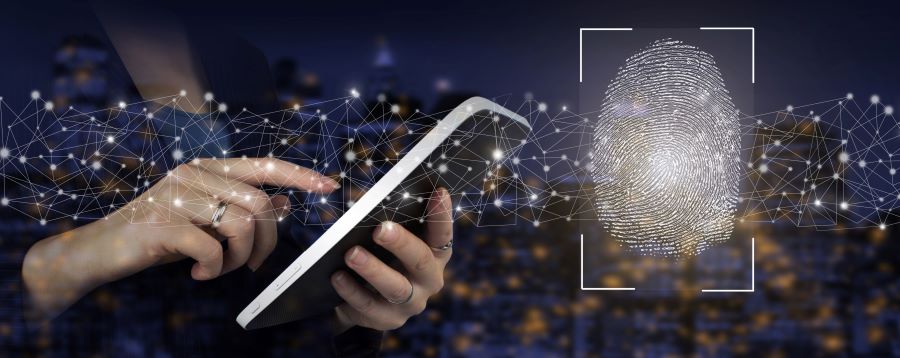Introduction
As digital transactions continue to evolve, contactless payments have become a popular choice for their speed and convenience. However, the future of this payment method is being significantly shaped by the introduction of biometric payments. This innovative technology promises to enhance security and streamline the payment process, setting a new standard for conducting transactions.
The Evolution of Contactless Payments
Current Technology
Contactless payments, powered by Near Field Communication (NFC) and Radio Frequency Identification (RFID), allow users to complete transactions with a simple tap or wave of their card or mobile device. This technology has transformed the payment landscape by offering a quick and secure alternative to traditional methods.
Adoption Trends
The contactless payments market has experienced rapid growth. According to a report by Grand View Research, the market was valued at approximately USD 40.62 billion in 2022 and is projected to expand to USD 164.15 billion by 2030. This growth reflects a robust compound annual growth rate (CAGR) of 19.1% from 2022 to 2030. The adoption of contactless payments spans across various regions, including North America, Europe, Asia Pacific, Latin America, and the Middle East and Africa.
Biometric Payments: The Next Frontier
What Are Biometric Payments?
Biometric payments leverage unique biological characteristics—such as fingerprints, facial recognition, or voice patterns—to authenticate transactions. By linking payment capabilities to an individual’s distinct physical traits, biometric authentication enhances security and convenience.
How Biometric Payments Work
Biometric payment systems analyze and verify biometric data to authorize transactions. This advanced technology integrates seamlessly into existing payment infrastructures, offering a high level of protection against fraud and improving user experience.
Benefits of Biometric Payments
Enhanced Security
Biometric payments offer significant security advantages. For example, a major financial institution reduced unauthorized access and fraudulent transactions by 80% after implementing biometric authentication for its mobile banking app. Similarly, a leading e-commerce platform saw a 90% decrease in fraudulent listings by adopting biometric checks for seller accounts. Additionally, a smartphone manufacturer’s introduction of facial recognition led to a 50% increase in user satisfaction and a 30% drop in support calls related to password resets.
Convenience and Speed
Real-world applications demonstrate the convenience of biometric payments. An international airport that implemented biometric facial recognition with liveness detection achieved a 40% reduction in boarding times and a 60% decrease in identity fraud cases. This technology not only speeds up transactions but also enhances overall user satisfaction.
Challenges and Considerations
Technical Challenges
Biometric payment systems face technical challenges, such as ensuring accurate recognition across diverse conditions and integrating biometric data securely into payment systems.
Adoption Barriers
The widespread adoption of biometric payments may encounter hurdles, including high implementation costs and potential user resistance. Privacy concerns and data security issues also play a role in shaping consumer acceptance.
Regulatory and Ethical Issues
The use of biometric data involves regulatory and ethical considerations. Compliance with privacy regulations and addressing concerns about data misuse are crucial for fostering trust and encouraging adoption.
The Future Outlook
Innovations on the Horizon
The future of biometric payments is promising, with anticipated innovations enhancing accuracy and security. KBV Research forecasts that the global market for contactless biometrics technology will reach USD 18.6 billion by 2026, reflecting a CAGR of 19.1% during this period. These advancements will likely drive further integration of biometric authentication into payment systems.
Impact on the Payment Industry
Biometric payments are set to revolutionize the payment industry by offering superior security and user convenience. As technology progresses, we can expect to see increased adoption and new applications that further embed biometric authentication into everyday transactions.
As digital transactions continue to evolve, contactless payments have become a popular choice for their speed and convenience. However, the future of this payment method is being significantly shaped by the introduction of biometric payments. This innovative technology promises to enhance security and streamline the payment process, setting a new standard for conducting transactions.
Conclusion
Integrating biometric payments into contactless transactions marks a significant technological leap forward. By offering unmatched security and convenience, biometric authentication is poised to redefine how we handle financial transactions. As this technology evolves, it will undoubtedly play a pivotal role in shaping the future of payments.
At PaydUp, we are at the forefront of this innovation, providing advanced payment gateway solutions that include biometric authentication. Our cutting-edge technology ensures that your transactions are secure but also streamlined and efficient.
For businesses looking to enhance their payment systems and address billing challenges, PaydUp offers tailored solutions to meet your needs. Contact Success@Paydup.net, to discover how PaydUp can help you optimize your subscription billing and protect your revenue. With our expertise, you’ll receive personalized support to ensure your payment processes are efficient and secure.
Get in Touch Today
Submit a Request
Call Us

